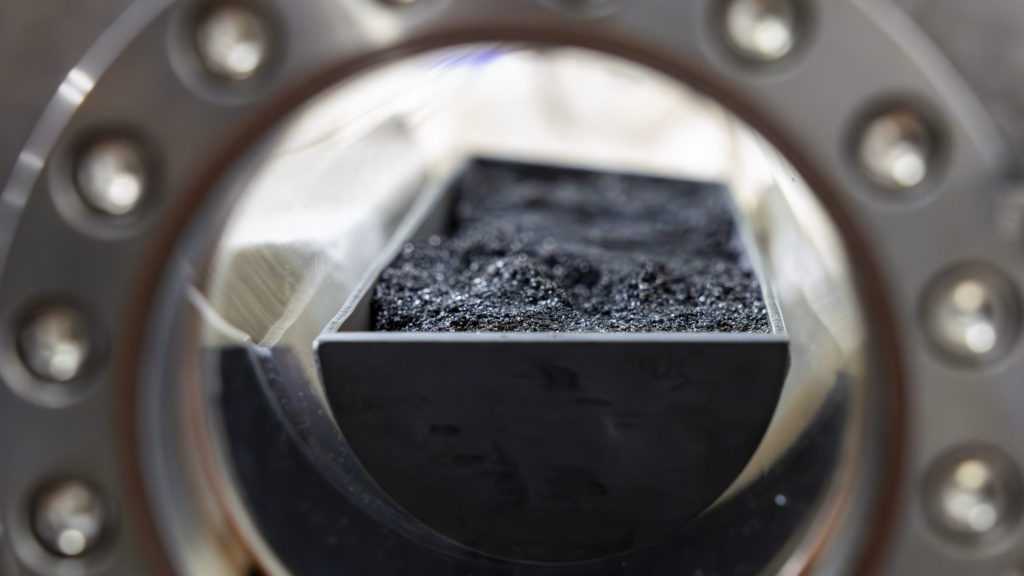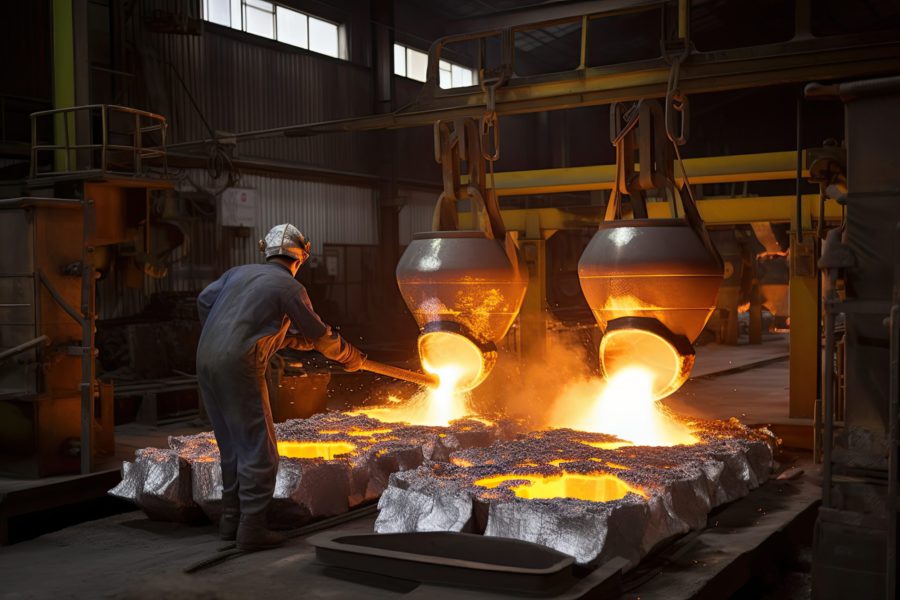Oak Ridge National Laboratory tests new methods of turning coal into graphite

Researchers at the Oak Ridge National Laboratory (ORNL) are testing two new methods of transforming coal into the scarce mineral graphite used in batteries for electric vehicles and renewable energy storage.
This coal-to-graphite project features a diverse team of engineers, materials scientists and computational chemists across the laboratory, who will will be responsible for developing and improving state-of-the-art graphite production processes, verifying their economic viability and scaling them up for manufacturing.
For the project, the ORNL researchers first optimized a process to heat the coal without oxygen, which prevents burning and transforms it into two major products: gases that can be condensed into coal liquids, and coal char.
One branch of the research team invented a method to treat the liquid byproduct before using an existing pressure-spray technique to make fine particles. Meanwhile, colleagues developed a recipe for converting either the particles or the char into graphite inside an electrochemical reactor.
Project lead Edgar Lara-Curzio said the project has three key benefits: enabling wider adoption of electric vehicles to slow climate change impacts; protecting national security by reducing dependence on foreign materials; and bringing economic development to former coal mining communities.
Bishnu Prasad Thapaliya, an electrochemist on the research team, added the potential impact is inspiring. “We can pivot from using coal to generate electricity to using coal to enable clean energy technologies, while helping people get back jobs and diversifying the supply chain for industry,” he said.
The US Geological Survey has classified graphite as a critical material because of America’s lack of domestic supply and reliance on foreign imports, especially its main rival China. Coal, on the other hand, is both abundant and affordable within the US.
“Lithium and cobalt are two critical minerals in batteries that grab all the headlines, but the biggest material by weight in the EV battery is graphite,” said Eric Wolfe, an engineer leading ORNL’s effort to scale up the electrochemical reactor. “The better the quality of graphite, the better battery you’re going to have. We can’t mine it here in the US but now we can make it.”
The ORNL is the largest science and energy national laboratory within the US Department of Energy. The project was funded by the DOE’s Fossil Energy and Carbon Management Program.
Preliminary analysis
A preliminary techno-economic analysis by the ORNL has found that the new process could be less expensive than conventional methods of making graphite. Test batteries made using ORNL’s graphite maintain their capacity after hundreds of cycles almost as effectively as their commercial counterparts, the study claims.
ORNL said its electrochemical approach is able to create graphite from coal byproducts at just 1,500 degrees Fahrenheit, compared to the 4,000 degrees required in the conventional synthetic graphite approach. The method also creates no emissions or waste products.
The ORNL method can even make graphite with waste from coal processing and old mines, creating value while performing environmental restoration. “We are very excited because we have found a way to utilize as much coal waste as possible,” Lara-Curzio said.
The University of Kentucky Center for Applied Energy Research partnered with ORNL to prepare and supply pitches, coal and waste coal materials for use in the project. Industry partner Ramaco Resources, which owns coal mines in Wyoming and Appalachia, supplies coal for the project and is poised to commercialize the technology.
“We are encouraged by the progress and breakthroughs we’ve made working with ORNL and are actively reviewing plans to design and build a pilot production facility that we can ramp into larger-scale production,” said Ramaco chairman and CEO Randy Atkins.
The economic analysis led by ORNL researcher Prashant Nagapurkar confirmed that the electrochemical approach could be scaled up profitably. Based on a factory manufacturing 10,000 tonnes a year, the new process would cost about 13% less than the cost of the conventional Acheson process, it said.
{{ commodity.name }}
{{ post.title }}
{{ post.date }}



Comments